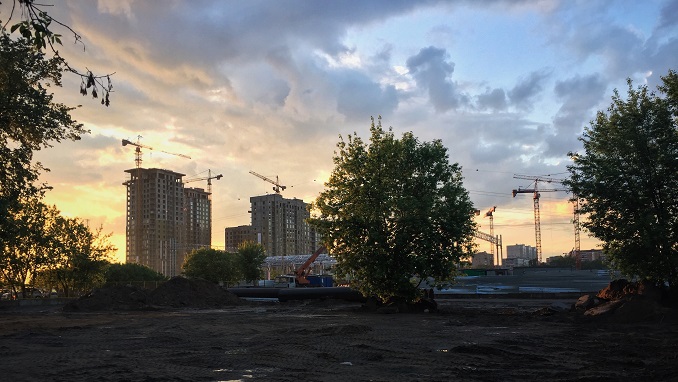House prices in Russia rose by 1.95% during the year to Q1 2019, a sharp improvement from last year’s 1.95% drop and the highest growth since Q4 2012, Global Property Guide reports.
During the latest quarter, house prices in the country increased by 1.6%. Prices on the capital Moscow rose slightly by 0.39% y-o-y in Q1 2019 while they increased 10.45% in St. Petersburg.
House prices across Russia plunged 47% (inflation-adjusted) in the past seven years.
Before slowing once again in the beginning of this year, Russia’s economy grew by 2.3% in 2018, after y-o-y growth of 1.6% in 2017 and 0.3% in 2016 and a contractions of 2.5% in 2015, due to the fall in energy prices and the impact of U.S. and EU sanctions triggered by Moscow’s annexation of Crimea.
However, after stabilizing in recent years, inflation is rising again. In March 2019, consumer prices rose by 5.3% from a year earlier, up from the previous month’s 5.2% rise and above the central bank’s target of 4%, according to the Federal State Statistics Service. In fact, it was the highest reading since December 2016 after the government raised VAT from 18% to 20%.
The Russian economy is projected to expand by 1.6% this year and by another 1.7% in 2020, according to the International Monetary Fund (IMF).
The ruble has lost almost 61% of its value in just three years, from an exchange rate of RUB 30.231= US$ 1 in January 2013, to RUB 77.175 in January 2016. Then in 2018, the ruble lost almost 16% of its value again, partially offsetting the 31.5% gain seen in 2016 and 2017. In April 2019, the average monthly exchange rate was RUB 64.628 = US$ 1.
Rents, rental yields: yields are poor both in Moscow and St. Petersburg, at around 3% to 4%, while Moscow apartment costs are high, at around $13,300 per square meter.












